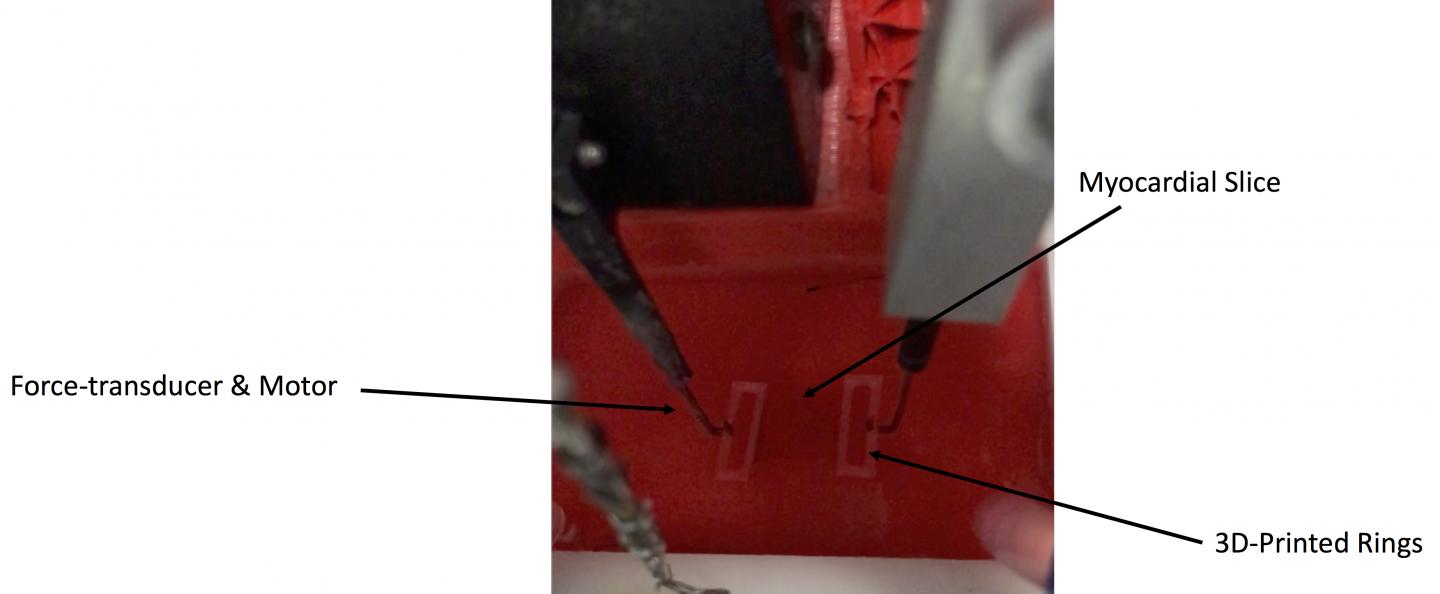
Credit: Fotios Pitoulis
Researchers at Imperial College London created a bioreactor to allow heart tissue to experience mechanical forces in sync with the beats, like it would in the body, to study the mechanics of healthy and diseased hearts.
BALTIMORE, MD – It is difficult to study hearts in the laboratory because of their incredible ability to change in response to their environment. Hearts in healthy athletes enlarge to support the increased demands on the body, hearts in those with chronic hypertension get thicker and less elastic and can eventually fail. Heart tissue in labs undergoes remodeling, making it difficult to understand heart physiology and to develop new medicines for heart disease. Graduate student Fotios Pitoulis, working in Cesare Terracciano’s lab at Imperial College London, in collaboration with Pieter de Tombe, created a new system to study heart tissue within a physiological environment. They will present their work at the 63rd Biophysical Society Annual Meeting, to be held March 2 – 6, 2019 in Baltimore, Maryland.
“The heart needs to generate force and shorten at the same time to squeeze blood out; this is not usually something you see in in vitro heart models,” Terracciano said.
Using tiny pieces of heart tissue with preserved structure and function, they were able to recapitulate the sequence of mechanical events as found in the body. This was done by creating a custom bioreactor that allows the tissue to shorten in sync with electrical stimulation. To see whether the heart tissue in their system behaved like it would inside the body, they added noradrenaline and changed the workload on the tissue to simulate normal conditions and disease. The team observed changes in force similar to those observed in hearts in vivo..
The new aspects of this system is that contraction parameters can be promptly adjusted using computer algorithms to mimic normal or disease conditions, for example to recreate the stiffer conditions of high blood pressure.
“If you have high blood pressure, you affect how the heart cells work. We can recreate this condition to understand what happens at the level of the tissue,” Terracciano said. Pitoulis added, “We now have a unique tool to study the mechanical and electrical properties of heart tissue, as well as long-term changes that happen at the molecular level within the context of healthy heart or disease.”
###
The Biophysical Society, founded in 1958, is a professional, scientific Society established to encourage development and dissemination of knowledge in biophysics. Its 9,000 members are located throughout the U.S. and the world, where they teach and conduct research in colleges, universities, laboratories and government agencies. The Annual Meeting attracts over 6,000 attendees and features more than 900 posters and over 500 speakers. http://www.
Media Contact
Sean Winkler
[email protected]
Original Source
https:/



